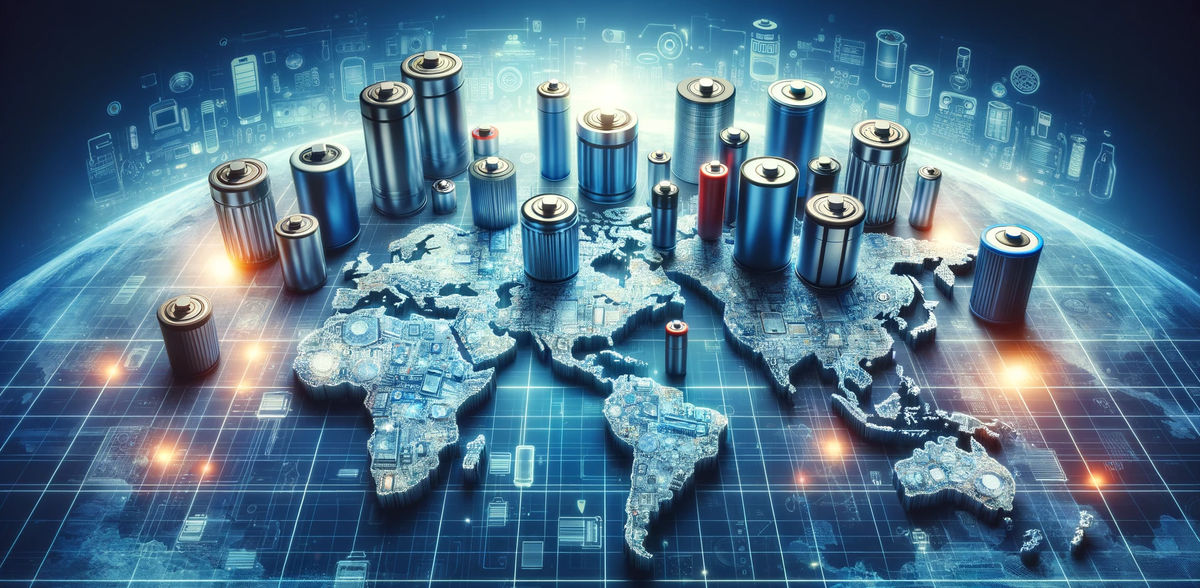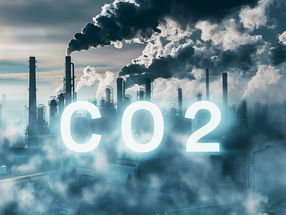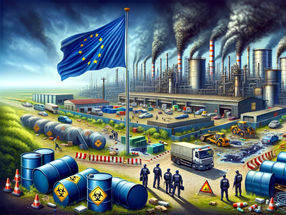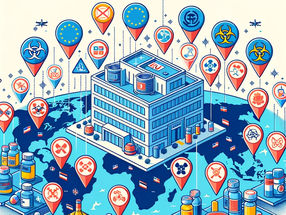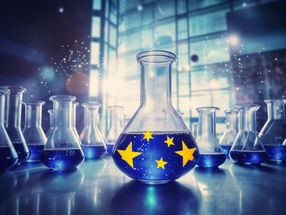International battery policies: What strategies do the leading countries have?
Funding for battery research has increased significantly worldwide
Advertisement
Countries around the world are developing political strategies for battery technologies or adapting them to global developments. In this context, a new study by Fraunhofer ISI, commissioned by the BMBF, analyzes the various battery policies and objectives with a focus on three areas of battery technology research: lithium-ion, solid-state and alternative batteries. The report highlights the following countries: Japan, South Korea, China, the USA, Europe and Germany.
Europe must make further progress in decarbonizing the energy and transport sectors. A European battery ecosystem with scaled production and circular supply chains can contribute to achieving this goal. However, developments are being influenced by international crises and existing alliances are being put to the test, meaning that access to critical technologies is increasingly taking center stage. These and other aspects need to be taken into account when developing battery ecosystems, which are currently emerging in many countries such as Germany and throughout the EU.
In this context, an international comparison between the different battery policy strategies of the leading countries is helpful - this is precisely the subject of the new study "Benchmarking International Battery Policies" by Fraunhofer ISI, which was commissioned by the German Federal Ministry of Education and Research (BMBF). The report focuses on lithium-ion, solid-state and alternative batteries as well as the political goals and strategies of Japan, South Korea, China, the USA, Europe and Germany. The study authors analyzed national announcements, publications and roadmaps describing political and technical goals, key performance indicators and funding strategies of the countries mentioned.
Funding for battery research has increased significantly worldwide
The results show that all countries are pursuing their own goals to become less dependent on international supply chains. Climate neutrality by 2045 (Germany) or 2050 is another common goal, with the exception of China (2060), but country-specific targets for sustainability and recycling vary widely. It also became clear that all countries have significantly increased their public funding for research and development (R&D) since 2014, partly due to new strategies (USA: Bipartisan Infrastructure Act, Japan: Green Growth Strategy, Korea: Secondary Battery Innovation Strategy) as well as strategic programs (Germany: Dachkonzept Batterieforschung 2023) from 2020 onwards. Funding has doubled or even tripled for the countries compared to the situation before 2020.
A cross-country analysis in the study on key performance indicators such as gravimetric and volumetric energy density, cycle life or costs revealed that each country defines a different number of KPIs with varying degrees of feasibility: Some of the countries rely on a large number of KPIs, e.g. China for lithium-ion, solid-state and alternative liquid electrolyte-based batteries, while others such as South Korea focus on a smaller number of core KPIs for specific technologies such as solid-state, lithium-sulphur and lithium-metal batteries. In some cases, the KPIs are defined as targets to be achieved through public support programs (for example, the US energy density target of 500 Wh/kg in the Battery500 consortium) or in other cases they are applied to next-generation technologies with even more uncertain development potential (for example, Japan's targets for commercialization of zinc anode/fluoride shuttle batteries after 2030).
Looking at the individual countries separately, the study shows the following results:
- China has long relied heavily on demand-based policies and focused on its own domestic market for electric vehicles, but is now increasingly moving towards a targeted battery strategy with increasing supply-side measures. In 2022, the country had the world's largest market share in the battery industry and is trying to strengthen its global market position. China has long focused on performance parameters such as energy density, but is now increasingly incorporating more qualitative parameters such as safety. The government has defined concrete goals in terms of sustainability, also with a view to expanding into the European market. The focus is currently on lithium-ion, solid-state, metal-sulphur and lithium-sulphur batteries.
- In the past,Germany pursued an open-technology strategy for battery technologies with many different measures, but a specific strategy for performance parameters was introduced with the "umbrella concept for battery research" updated in January 2023. This concept also focuses on the development of production processes on a larger scale in order to expand production capacities. In addition, joint projects and funding with European industry are aimed at a uniform approach to the implementation of EU policies on topics such as sustainability, recycling and the digitalization of batteries. On the technological side, the German strategy has defined specific targets for the development of solid-state, sodium-ion and other alternative batteries.
- As an early technology leader,Japan has traditionally focused on the supply side. However, as the country has steadily lost market share in global competition, priority has recently been placed on expanding production capacity and securing the domestic and global market for lithium-ion batteries, for example as part of a strategy formulated for the Japanese battery industry in 2022. In terms of technology, the country is focusing on lithium-ion, solid-state and alternative battery types such as fluoride shuttle and zinc anode batteries, and Japan is the only country to have defined performance parameters for alternative battery prototypes by 2025.
- The USA has invested in both supply-side and demand-side measures, including through programs such as the Inflation Reduction Act 2022. In terms of innovation policy, the country tends to pursue an open-technology strategy with the aim of becoming an international leader in R&D and gaining greater independence from competitors, particularly China. In this context, a recently published national plan also defines performance parameters for the cost and sustainability of batteries. Solid-state and lithium-metal batteries, as well as lithium-ion and lithium-metal batteries with liquid electrolyte, are regarded as future "revolutionary battery technologies". The focus is also on supplying the domestic market.
- South Korea is striving to become an international leader in the battery industry. The country's strategy shows a clear R&D focus on the commercialization of lithium-sulphur (2025), solid-state (2027) and lithium-metal batteries (2028). South Korea has not only committed to promoting its e-mobility industry, but has also provided direct support to battery manufacturers, such as extensive tax incentives. Another unique aspect of the strategy is that three large private companies are making major investments together with the government. The country is focusing on lithium-ion, solid-state and next-generation batteries, but lithium-sulphur and lithium-metal batteries are also mentioned.
- The EU 's battery policy can be described as supply-side, but also contains demand-side elements that affect the end of the value chain with regard to the purchase of electric vehicles. As the EU's main priority is environmental issues, there are ambitious targets on battery sustainability and recycling, which have also been included in the new EU Battery Regulation. The focus is on lithium-ion, solid-state and alternative battery types such as redox-flow, metal-air and sodium-ion batteries. The main objective is to become a leading supplier of sustainable battery technologies in order to create a competitive and sustainable battery value chain in the EU.
All the countries studied have fairly up-to-date strategies for battery ecosystems
Project manager Dr. Axel Thielmann from Fraunhofer ISI explains: "Our study shows that all countries have quite up-to-date strategies due to the critical phase of the market ramp-up for electromobility between 2020 and 2030, the current geopolitical situation and the drive for technology sovereignty. These are increasingly market- and industry-oriented and supply- and demand-side measures for the development of circular battery ecosystems are increasingly being combined."
According to the study authors, there is no one right way to promote technology development, as China's success underlines: the country has built a robust, internationally competitive battery value chain and is a leader in battery research and development. Future policy strategies should be based more on key performance indicators and monitoring the status quo, especially in light of the ever-increasing funding budgets and their adequate use. It would also be beneficial to clarify how these performance indicators could be integrated into ongoing R&D activities in order to be able to map progress in the commercialization of optimized lithium-ion batteries.
Note: This article has been translated using a computer system without human intervention. LUMITOS offers these automatic translations to present a wider range of current news. Since this article has been translated with automatic translation, it is possible that it contains errors in vocabulary, syntax or grammar. The original article in German can be found here.
Other news from the department politics & laws
These products might interest you
Most read news
More news from our other portals
See the theme worlds for related content
Topic World Battery Technology
The topic world Battery Technology combines relevant knowledge in a unique way. Here you will find everything about suppliers and their products, webinars, white papers, catalogs and brochures.

Topic World Battery Technology
The topic world Battery Technology combines relevant knowledge in a unique way. Here you will find everything about suppliers and their products, webinars, white papers, catalogs and brochures.
